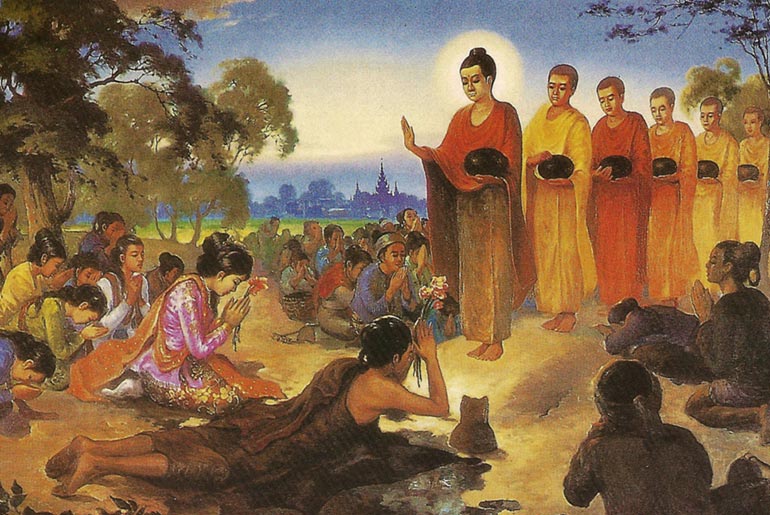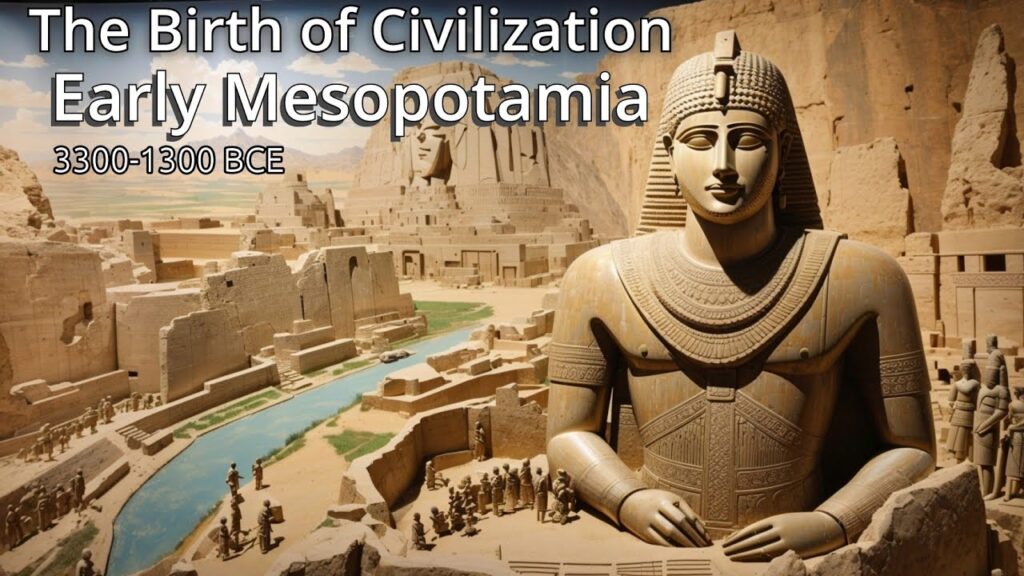
A Comprehensive History of Buddhism: An A-Z Exploration
Buddhism, a major world religion founded on the teachings of Siddhartha Gautama, known as the Buddha, offers a profound and multifaceted tradition that has influenced cultures across Asia and the world. This extensive article explores the history of Buddhism from A to Z, providing a detailed account of its development, teachings, key figures, and global impact.
A – Ancestry and Awakening
Ancestry of Siddhartha Gautama
- Historical Context: Siddhartha Gautama, the historical Buddha, was born in the 6th century BCE in Lumbini (present-day Nepal). He was a prince of the Shakya clan in the kingdom of Kapilavastu.
- Family Background: His father, King Śuddhodana, sought to shield him from the harsh realities of life. His mother, Queen Maya, died shortly after his birth, and he was raised by his aunt, Mahāpajāpatī Gotamī.
Awakening (Bodhi)
- The Great Renunciation: At the age of 29, Siddhartha left his royal life and family in search of enlightenment. He encountered the “Four Sights”—an old man, a sick man, a dead man, and an ascetic—which led him to seek a path to liberation from suffering.
- Meditation and Enlightenment: Siddhartha practiced severe asceticism before sitting under the Bodhi tree in Bodh Gaya, where he attained enlightenment, becoming the Buddha (“the Awakened One”). He realized the Four Noble Truths and the Eightfold Path.
B – Buddhist Councils and Branches
Buddhist Councils
- First Council (483 BCE): Held shortly after Buddha’s death, convened by Mahākāśyapa to preserve and codify the teachings. Key figures included Ānanda and Upāli, who recited and compiled the Buddha’s discourses.
- Second Council (383-375 BCE): Addressed disputes regarding monastic discipline and practices. It was held at Vaishāli and led to the development of various sects.
- Third Council (250 BCE): Initiated by Emperor Ashoka, this council was convened by the monk Moggaliputta Tissa. It aimed to purify the Buddhist order and spread Buddhism beyond India.
- Fourth Council (CE 400-500): Held in Sri Lanka, it focused on compiling the Pali Canon and preserving the Theravada tradition.
- Fifth Council (1871-1872): Held in Myanmar, it focused on reciting and preserving the Pali Canon and revising the texts.
Branches of Buddhism
- Theravada: Known as the “Teaching of the Elders,” this tradition emphasizes the original teachings of the Buddha and focuses on monastic life. It is prevalent in Sri Lanka, Thailand, Myanmar, and Laos.
- Mahayana: Meaning “Great Vehicle,” it includes a wide range of practices and beliefs, focusing on the Bodhisattva path and the aspiration to attain Buddhahood for the benefit of all beings. Prominent in East Asia (China, Japan, Korea).
- Vajrayana: Also known as Tantric Buddhism, it incorporates esoteric practices and rituals aimed at achieving enlightenment swiftly. It is mainly practiced in Tibet, Bhutan, and parts of Nepal and India.
- Zen: A school of Mahayana Buddhism emphasizing meditation (zazen) and direct experience. It has a strong presence in Japan, China, and Korea.
- Pure Land: Focuses on devotion to Amitābha Buddha and the aspiration to be reborn in his Pure Land, a realm where enlightenment is more easily attained. Popular in East Asia.
C – Core Teachings and Concepts
Four Noble Truths
- Dukkha (Suffering): Life is characterized by suffering and dissatisfaction, including physical pain, emotional distress, and existential dissatisfaction.
- Samudaya (Origin of Suffering): Suffering originates from desire (tanha) and attachment. Craving and clinging lead to continuous rebirth and suffering.
- Nirodha (Cessation of Suffering): It is possible to end suffering by eliminating desire and attachment, leading to Nirvana, the cessation of suffering.
- Magga (Path to Cessation): The Eightfold Path is the way to achieve the cessation of suffering and attain Nirvana. It includes Right Understanding, Right Intent, Right Speech, Right Action, Right Livelihood, Right Effort, Right Mindfulness, and Right Concentration.
Eightfold Path
- Right Understanding: Comprehending the nature of reality and the Four Noble Truths.
- Right Intent: Cultivating intentions of renunciation, non-ill will, and harmlessness.
- Right Speech: Practicing truthful, harmonious, and beneficial speech.
- Right Action: Engaging in ethical behavior, including refraining from killing, stealing, and sexual misconduct.
- Right Livelihood: Earning a living in a way that does not harm others or contradict Buddhist principles.
- Right Effort: Making persistent efforts to abandon unwholesome states and develop wholesome ones.
- Right Mindfulness: Being aware of the body, feelings, mind, and phenomena, and observing them with clarity.
- Right Concentration: Developing deep states of meditative absorption (jhana) leading to insight.
Three Marks of Existence
- Anicca (Impermanence): All things are in constant flux and change. Nothing is permanent.
- Dukkha (Suffering): Suffering arises from the impermanent nature of all phenomena and from craving.
- Anatta (Non-Self): The concept that there is no permanent, unchanging self or soul. The belief in a permanent self leads to suffering.
D – Development and Dissemination
Early Spread
- India: After Buddha’s death, his teachings spread through the Indian subcontinent, supported by patrons such as Emperor Ashoka, who sent missionaries to various regions.
- Sri Lanka: Buddhism was introduced in the 3rd century BCE by Mahinda, Ashoka’s missionary, and became established in Sri Lankan culture.
- Central Asia: Buddhism spread along the Silk Road, reaching regions like Gandhara and Bactria, influencing art and culture.
Spread to East Asia
- China: Buddhism entered China during the Han Dynasty (circa 1st century CE), with significant translation efforts by monks like Kumarajiva. The growth of various schools, including Chan (Zen) and Pure Land, occurred over centuries.
- Korea and Japan: Buddhism was introduced to Korea in the 4th century CE and later to Japan in the 6th century CE. Various schools, including Tendai and Shingon, developed in Japan.
Modern Spread
- Western Interest: Buddhism gained interest in the West during the 19th and 20th centuries, influenced by scholars, travelers, and Asian immigrants. The establishment of Buddhist centers and the spread of mindfulness practices contributed to its growth.
- Globalization: Today, Buddhism is practiced worldwide, with diverse expressions and adaptations to different cultural contexts. The rise of mindfulness and meditation has increased its popularity in secular settings.
E – Enlightenment and Ethics
Enlightenment (Nirvana)
- Definition: Nirvana is the ultimate goal in Buddhism, representing the end of suffering and the cycle of rebirth. It is achieved through the complete eradication of craving and ignorance.
- Path to Enlightenment: The path involves following the Eightfold Path, developing insight (vipassana), and cultivating wisdom and compassion.
Ethics and Morality
- Five Precepts: Lay Buddhists observe five ethical precepts: refraining from killing, stealing, sexual misconduct, lying, and intoxication.
- Monastic Rules: Monks and nuns follow a more extensive set of rules, including the Vinaya Pitaka, which governs monastic conduct and discipline.
F – Figures and Founders
Founders and Reformers
- Siddhartha Gautama (The Buddha): The founder of Buddhism, whose enlightenment and teachings form the basis of the religion.
- Asanga and Vasubandhu: Important figures in the development of the Yogācāra school of Mahayana Buddhism.
- Dogen Zenji: A key figure in Japanese Zen Buddhism, known for founding the Soto school and writing influential works on meditation and practice.
Significant Monks
- Huili: A Chinese monk known for his role in spreading Mahayana Buddhism in China.
- Thich Nhat Hanh: A Vietnamese Zen master and peace activist who popularized mindfulness and engaged Buddhism in the 20th century.
G – Global Impact and Growth
Cultural Influence
- Art and Architecture: Buddhist art, including stupas, pagodas, and statues of the Buddha, has profoundly influenced Asian art and architecture. The development of Buddhist iconography reflects various regional styles.
- Literature: Buddhist texts, including the Pali Canon, Mahayana sutras, and Tibetan texts, have contributed to global literature and philosophy.
Social Impact
- Humanitarian Work: Buddhist organizations are involved in various humanitarian efforts, including disaster relief, education, and healthcare.
- Interfaith Dialogue: Buddhism’s principles of non-violence and compassion have fostered interfaith dialogue and cooperation.
H – Historical Developments and Heresies
Historical Developments
- Buddhist Empires: The spread of Buddhism was supported by several empires, including the Maurya Empire under Ashoka and the Gupta Empire, which patronized Buddhist institutions and scholarship.
- Schisms and Sects: Over time, various schisms and sects emerged within Buddhism, including the Theravada-Mahayana split and the formation of different schools and traditions.
Heresies and Controversies
- Abhidhamma Controversy: Disputes over the interpretation of the Abhidhamma, a collection of teachings and philosophical texts, led to different schools of thought within Buddhism.
- Modern Criticisms: Some modern scholars and practitioners criticize aspects of traditional Buddhism, such as its monastic practices and interpretations of karma and rebirth.
I – Influence and Integration
Influence on Other Religions
- Hinduism: Buddhism and Hinduism share many philosophical concepts and practices, including meditation and the belief in karma. The historical interaction between the two has led to mutual influences and adaptations.
- Jainism: Buddhism and Jainism share similarities in their emphasis on non-violence and ascetic practices, though they differ in their views on the self and liberation.
Integration with Local Cultures
- Asian Cultures: Buddhism has integrated with local cultures across Asia, resulting in diverse practices and traditions, such as Tibetan Buddhism’s incorporation of Bon elements and Japanese Buddhism’s adaptation to Shinto beliefs.
- Western Contexts: In the West, Buddhism has been adapted to contemporary contexts, influencing areas such as psychology, mindfulness, and secular ethics.
J – Japanese Buddhism and Jainism
Japanese Buddhism
- Schools of Japanese Buddhism: Includes various schools such as Tendai, Shingon, Pure Land, and Zen. Each has its distinct practices, rituals, and philosophical teachings.
- Influence on Culture: Japanese Buddhism has significantly influenced Japanese culture, including art, garden design, and daily life practices.
Jainism
- Historical Connections: Jainism and Buddhism emerged around the same time in ancient India and share similarities, such as non-violence and asceticism. However, they differ in their views on the self and liberation.
K – Karma and Key Practices
Karma
- Definition: Karma refers to the law of cause and effect, where one’s actions (good or bad) influence their future experiences and rebirths.
- Karmic Accumulation: The accumulation of karma affects one’s spiritual progress and future lives. Positive actions lead to favorable outcomes, while negative actions lead to suffering.
Key Practices
- Meditation: A central practice in Buddhism, including mindfulness (vipassana) and concentration (samatha) meditation, aimed at developing insight and inner peace.
- Mindfulness: Practicing awareness and presence in the moment, a technique popularized in contemporary settings and rooted in traditional Buddhist teachings.
L – Life of the Buddha and Legacy
Life of the Buddha
- Early Life: Siddhartha’s early years as a prince, his renunciation of worldly life, and his quest for enlightenment.
- Teaching Years: Buddha’s teachings, travels, and the establishment of the monastic community (Sangha).
- Death and Parinirvana: Buddha’s final passing into Parinirvana at Kushinagar, marking the end of his earthly existence and the attainment of complete liberation.
Legacy
- Spread of Buddhism: The establishment of Buddhist traditions, texts, and practices across Asia and their adaptation in the modern world.
- Cultural Contributions: The impact of Buddhism on art, philosophy, and social ethics globally.
M – Meditation and Mindfulness
Meditation Practices
- Samatha (Concentration Meditation): Focuses on developing deep states of mental concentration and tranquility.
- Vipassana (Insight Meditation): Aims to gain insight into the true nature of reality, including impermanence, suffering, and non-self.
Mindfulness (Sati)
- Principles: Cultivating awareness and presence in daily activities, often practiced through techniques such as mindful breathing and body scan meditation.
- Applications: Used in therapeutic contexts, such as Mindfulness-Based Stress Reduction (MBSR) and Mindfulness-Based Cognitive Therapy (MBCT).
N – Nirvana and Notable Texts
Nirvana
- Definition: The ultimate goal in Buddhism, representing the liberation from the cycle of birth and death (samsara) and the cessation of suffering.
- Attainment: Achieved through the practice of the Eightfold Path, the development of wisdom, and the eradication of desire and ignorance.
Notable Texts
- Tripitaka (Pali Canon): The primary religious canon of Theravada Buddhism, including the Vinaya Pitaka (monastic rules), Sutta Pitaka (discourses), and Abhidhamma Pitaka (philosophical and doctrinal analyses).
- Mahayana Sutras: Important texts for Mahayana Buddhism, including the Lotus Sutra, Heart Sutra, and Diamond Sutra.
- Tibetan Texts: Includes the Tibetan Book of the Dead and various teachings of the Dalai Lamas and other Tibetan Buddhist teachers.
O – Origins and Outreach
Origins
- Historical Context: Buddhism originated in India with Siddhartha Gautama’s enlightenment and teachings in the 5th-4th century BCE.
- Early Spread: Buddhism spread through India and beyond, influenced by rulers like Ashoka and later by trade routes like the Silk Road.
Outreach
- Missionary Activities: Early Buddhist missionaries traveled to various regions to spread the teachings, including China, Southeast Asia, and Tibet.
- Modern Outreach: Contemporary efforts include establishing Buddhist centers, engaging in interfaith dialogue, and promoting mindfulness and meditation practices globally.
P – Philosophy and Practices
Philosophy
- Dependent Origination (Pratītyasamutpāda): The concept that all phenomena arise in dependence on other phenomena and that nothing exists independently.
- Emptiness (Śūnyatā): The idea that all things lack inherent existence and are interdependent.
Practices
- Rituals and Offerings: Includes practices such as chanting, making offerings, and participating in ceremonies to accumulate merit and express devotion.
- Ethical Conduct: Observing precepts and engaging in virtuous behavior as a foundation for spiritual development.
Q – Questions and Quests
Questions
- Nature of Suffering: Exploring the nature of suffering and its causes, as well as the path to liberation from it.
- Existence of Self: Examining the concept of non-self and its implications for identity and experience.
Quests
- Quest for Enlightenment: The spiritual journey of individuals seeking enlightenment through meditation, ethical conduct, and wisdom.
- Quest for Historical Buddha: Scholarly efforts to reconstruct the historical life of Siddhartha Gautama and understand the origins of Buddhism.
R – Rituals and Rebirth
Rituals
- Daily Practices: Includes practices such as meditation, recitation of sutras, and offerings at temples.
- Festivals: Celebrations such as Vesak (Buddha’s birthday), Uposatha (observance days), and various local festivals commemorating significant events in Buddhist history.
Rebirth
- Concept of Samsara: The cycle of birth, death, and rebirth driven by karma and desire.
- Goal of Liberation: The ultimate aim is to break free from the cycle of rebirth and attain Nirvana.
S – Schools and Sects
Major Schools
- Theravada: Emphasizes the Pali Canon and monastic discipline. Practiced in Southeast Asia.
- Mahayana: Includes diverse traditions such as Zen, Pure Land, and Nichiren. Focuses on the Bodhisattva path and universal salvation.
- Vajrayana: Incorporates esoteric practices and rituals, including Tibetan Buddhism and its various schools.
Sects and Variations
- Zen (Chan): Focuses on meditation and direct experience, emphasizing the attainment of enlightenment through practice rather than doctrine.
- Tibetan Buddhism: Includes various schools such as Gelug, Nyingma, Kagyu, and Sakya, each with unique practices and teachings.
T – Teachings and Traditions
Teachings
- The Four Noble Truths: Fundamental teachings on suffering, its cause, its cessation, and the path leading to its cessation.
- The Noble Eightfold Path: A guide to ethical and mental development to achieve enlightenment.
Traditions
- Monastic Tradition: The practice of renouncing worldly life to pursue spiritual goals, with a focus on meditation, study, and ethical living.
- Lay Practice: Involves observing precepts, participating in rituals, and supporting the monastic community while engaging in daily life.
U – Universal Teachings and Unity
Universal Teachings
- Compassion and Wisdom: Core values in Buddhism, emphasizing the cultivation of loving-kindness, compassion, and wisdom in all aspects of life.
- Interconnectedness: Understanding the interdependence of all phenomena and the importance of ethical conduct and mindfulness.
Unity
- Global Unity: Buddhism’s diverse traditions and practices contribute to a global community united by shared values of peace, compassion, and wisdom.
- Interfaith Dialogue: Engaging with other religious and philosophical traditions to promote mutual understanding and cooperation.
V – Values and Visions
Values
- Non-Violence (Ahimsa): A fundamental principle in Buddhism advocating for the avoidance of harm and violence towards all beings.
- Generosity (Dāna): The practice of giving and selflessness, which is highly valued in Buddhist ethics and community life.
Visions
- Vision of Enlightenment: The aspiration to achieve enlightenment and liberation from the cycle of rebirth, benefiting all sentient beings.
- Vision of a Just Society: Promoting social justice, equality, and compassion in the broader world, inspired by Buddhist principles.
W – Wisdom and Western Influence
Wisdom (Paññā)
- Development of Insight: Cultivating deep understanding through meditation, study, and reflection on the nature of reality.
- Role in Enlightenment: Wisdom is essential for achieving Nirvana and overcoming ignorance and delusion.
Western Influence
- Mindfulness Movement: The adoption and adaptation of Buddhist mindfulness practices in secular contexts, including psychotherapy and personal development.
- Academic Study: The scholarly study of Buddhism has increased awareness and understanding of its teachings and practices in the Western world.
X – Xenology and Xenial Practices
Xenology
- Study of the Foreign: Examining the influence of Buddhism on and interaction with other cultures and religions. This includes the adaptation of Buddhist practices in diverse cultural contexts.
Xenial Practices
- Hospitality and Compassion: The Buddhist practice of showing kindness and hospitality towards others, reflecting the universal values of compassion and empathy.
Y – Yoga and Yana
Yoga
- Integration with Buddhism: The practice of yoga, including physical postures and meditation, has been integrated into various Buddhist traditions, particularly in Tibetan Buddhism.
- Meditative Yoga: Focuses on meditation and mindfulness, aiming to cultivate mental clarity and spiritual insight.
Yana
- Vehicles of Practice: Different “vehicles” or paths in Buddhism, including Theravada (Hinayana), Mahayana, and Vajrayana. Each yana offers distinct approaches to achieving enlightenment.
Z – Zen and Zazen
Zen
- Origins: Zen Buddhism, originating in China as Chan and later developing in Japan, emphasizes direct experience and meditation.
- Practice: Focuses on meditation, mindfulness, and the direct realization of one’s true nature.
Zazen
- Seated Meditation: The practice of seated meditation in Zen Buddhism, focusing on posture, breath, and the cultivation of present-moment awareness.
- Purpose: Aims to deepen meditation practice and facilitate direct insight into the nature of existence.
This comprehensive exploration of Buddhism covers its rich history, teachings, and global impact, providing a thorough understanding of this profound tradition. From its origins with Siddhartha Gautama to its contemporary manifestations, Buddhism continues to offer valuable insights and practices for personal and societal transformation.






